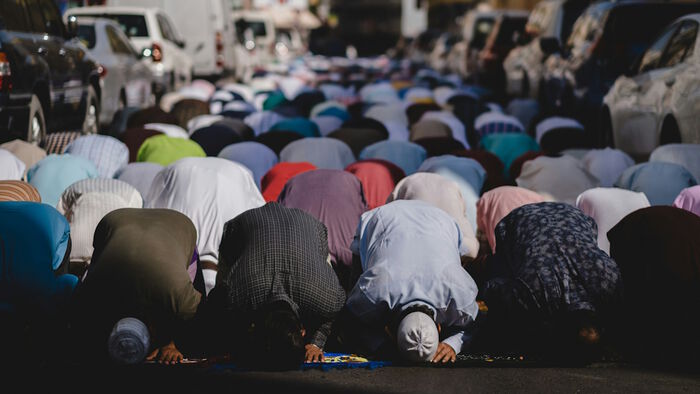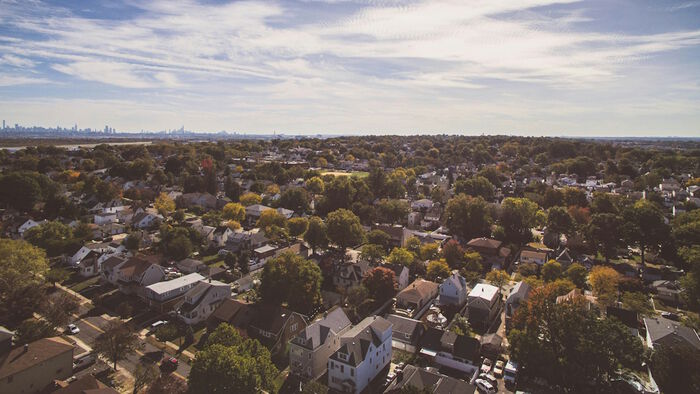In the Russian Federation, the line between state and non-state actors is blurred. Nationalist groups operate in a controlled landscape where anti-extremism legislation defines which organisations are allowed to be active. Websites, social media channels and other media platforms can be taken down by the Federal Service for Supervision of Communications, Information Technology, and Mass Communications (Roskomnadzor). Censorship has intensified since March 2022, targeting oppositional groups, independent media outlets, and Meta social media (such as Facebook or Instagram), by marking them as extremist. The regulations shape a climate of limited ideological plurality where right-wing extremist movements promoting oppositional views and exclusionary nationalism are among the most censored actors. Fractions with visions that overlap with the government can operate undisturbed.
Russian nationalist groups differ in whether they see Russia as a mono- or multi-ethnic society. The former camp includes right-wing extremist groups, which are inward-looking and Russo-centric while the latter groups support imperialist, outward-looking narratives for a multi-ethnic nation. Discourses of militarism, multipolarity, messianism, conservatism, and political Orthodoxy are ubiquitous. However, divides between civic and ethnic, national and imperial identity lines cannot be applied in a straightforward manner to the Russian case. There are groups displaying both imperialist and ethno-nationalist standpoints that operate without being labelled as extremists. The so-called imperialists do not have a unified ideological front: some groups support the Soviet legacy, territorial claims, and secular governance while others are longing for the return of a monarchical empire and a tsar alongside the Church. Here, focus will be on the practices and discourses of three active and imperialist Russian nationalist organisations: the right-wing extremist Russian Imperial Movement, the nationalist and conservative Tsargrad Society, and Izborskii Club.
It is important to understand such groups since they have a strategic function for the Russian war effort in Ukraine. This includes recruitment and training for the frontlines (RIM), as well as the formation of an ideological foundation for current policies and the media agenda (Tsargrad and Izborskii Club). The list of nationalist groups labelled extremist since the 2000s (published by the Ministry of Justice), demonstrates that the state is tolerant of such groups, whilst censoring oppositional movements together with extremist ethno-nationalists ones. Major far-right and far-left organisations were banned in the early 2000s (e.g. the National Bolsheviks, the Slavic Union, the Movement Against Illegal Immigration, the All-Russian National Union, and the Russian Socialist Society). The period between 2014 and 2021 saw the prohibition of Ukrainian groups too, as well as Russian grassroot actors such as football fans, sports and hooligan associations, skinhead movements, and youth organisations. Far-right organisation was scattered and decentralised as a result. However, other nationalist groups filled the vacuum, and managed to operate strategically without state repression.
The Russian Imperial Movement: Military training for the frontlines, empire, and monarchism
The far-right Russian Imperial Movement (RIM), founded in 2001, is one of the nationalist groups which provides military training, and has actively participated in the wars on Ukraine since 2014. RIM was designated as a terrorist group by the US State Senate in 2020, and by the Canadian Government in 2021, due to the provision of paramilitary training for European white supremacists and neo-Nazis. In 2022 the movement mobilised its military arm, the ”Imperial Legion”, and maintains training facilities at their ”Partisan Centre” in Saint Petersburg. RIM has specific requirements for volunteers to the Imperial Legion, including adherence to Orthodoxy, conservative political views, physical fitness, and no alcohol or drug dependency. Volunteers can choose between participation in armed conflicts or civilian projects.
Social media and the digitalisation of wartime practices are crucial to RIM’s communications. For instance, public social media spaces are used to announce recruitment rounds, give live updates from the front, and provide details about casualties. Videos about topics such as combat and firearm training, tactical medicine, or the psychology of wartime stress are distributed through public social media channels as educational material for volunteers. The movement also engages in cultural practices, such as the celebration of Orthodox holidays, and commemorations of Russian monarchs, patriarchs and other historical figures.
RIM’s ideology can be summarised as far-right ethno-nationalism, imperialist monarchism, Orthodoxy, and Russian cultural chauvinism. RIM describes itself as adhering to the triad of “God, Tsar, Nation”, (reconceptualising Sergey Uvarov’s formula “Orthodoxy, Autocracy, and Nationality”). Messianism and the idea of Moscow as the Third Rome are common themes in their programme. Russia is seen as the heir of the Byzantine empire, in terms of its moral mission to preserve Orthodox Christianity and conservative family values. The movement promotes an imperialist territorial imaginary, where Belarus and Ukraine are presented as “White Russia” and “Little Russia”. While much of their discourse overlaps with Kremlin ideology, RIM is at times critical of state decisions and elites. For instance, live updates during the retreat of RIM from Kherson in November 2022 portrayed it as a “betrayal” and “corruption”, indicating serious discontent with the regime.
Tsargrad Society and Tsargrad Television: The entanglement of the grand imperial imaginary, Orthodoxy, and conservative television in a digital media ecosystem
Tsargrad Society (previously known as the Double-Headed Eagle), led by the Russian oligarch Konstantin Malofeev, with its associated online television channel Tsargrad TV, is one of the most dynamic digital media nationalist ecosystems. Tsargrad TV was removed from YouTube after US sanctions against Konstantin Malofeev, but remains visible on Telegram, VKontakte (VK), and live broadcasts via their web platforms. Interestingly, according to Medialogia, Tsargrad TV became one of the top 10 most cited internet sources in Russia in May 2022, when state censorship of liberal and independent media outlets began. Tsargrad Society’s manifesto envisages the Russian state as a “civilisation of the North mastering the vast spaces of Eurasia”, а concept borrowed from Aleksandr Dugin’s Eurasianists. Dugin often appears on Tsargrad TV and comments on the Russian invasion of Ukraine, while Konstantin Malofeev held a speech at the funeral of Darya Dugina in Moscow.
Similar to RIM, Tsargrad Society often uses the concepts of the “Third Rome” or “Holy Rus” to frame the Russian Federation as promoting traditional family values, juxtaposed to a liberal and decadent Europe/West. Russian cultural centrism is key, especially when discussing immigration policy. Publications demand the assimilation of immigrants into Russian culture and language. Tsargrad lobbies for the introduction of professional restrictions based on qualifications such as knowledge of Russian, and the prioritisation of Russian citizens in recruitment. Some of the stated goals of Tsargrad are the “revival of the Russian empire with its historical borders” including the Baltic states, Central Asia, Caucasus, Moldavia, Belarus, and Ukraine.
Whilst Tsargrad Society appears to be aligned or cooperating with the Kremlin on some matters, it holds divergent positions on others. On one hand, representatives of the Society participate in various state committees, and in conferences about government objectives related to demographics, family support, and migration policy, as well as joint initiatives with the Russian Orthodox Church. On the other hand, Tsargrad presents populist voices to Russian audiences, branding its content as an alternative to mainstream television. For example, despite demonstrating general support for the Russo-Ukrainian war, Tsargrad television distributed materials and 24/7 legal advice on how to avoid military conscription on social media and via a telephone hotline.
Izborskii Club: A platform for national unification and ideological production
Izborskii Club is a platform which unifies a diverse body of Russian left- and right-wing nationalists, and contributes to the state’s patriotic policy, and agenda-setting for state media. The Club brings together figures such as Aleksandr Prokhanov, Alexandr Dugin, Valeri Korovin, Natalya Narochnitskaya, and Metropolitan Tikhon (Shevkunov), facilitating cooperation among imperialist nationalists. Unlike Tsargrad, which aims to engage broader audiences through media, Izborski Club is a think tank where different ideas such as the “Russian Dream”, the “Russian Ark”, or notions about Russia’s “cosmic” function are articulated. Their journal Russian Strategies (Russkie Strategii) is crucial to the communication of their ideas, and are supplemented with video content, round tables and conferences.
Discourses about the juxtaposition of Russia and the West were produced before the ongoing Russo-Ukrainian war, but became more common in 2022–23. The conflict is framed as a fight for the survival of the Russian Federation, and the preservation of its sovereignty, resources and values - a global geopolitical battle with NATO and the USA. The Club works closely with state institutions and has been financed by the Presidential Fund for Cultural Initiatives, which aims to produce content for the state’s educational system. Similar to Tsargrad TV, the Club has developed a network with regional branches and local initiatives.
Conclusion
The Russian Imperial Movement, Tsargrad Society, and Izborskii Club are only some of the actors that shape the current Russian nationalist landscape. However, they provide examples of synergies across domestic nationalist groups and overlapping identity discourses of empire, conservatism, Orthodoxy, and autocracy. Categories such as ethnic, civic, cultural, and imperial are entangled and negotiated in line with government discourses and frameworks, and in-group imaginaries. Nationalist cultural production is becoming more prevalent both in digital and traditional media spaces. While independent and oppositional media channels are restricted, only one year since the invasion, selected nationalist voices have filled the vacuum in Russian public space.
.jpg)

.jpg?alt=listing)


